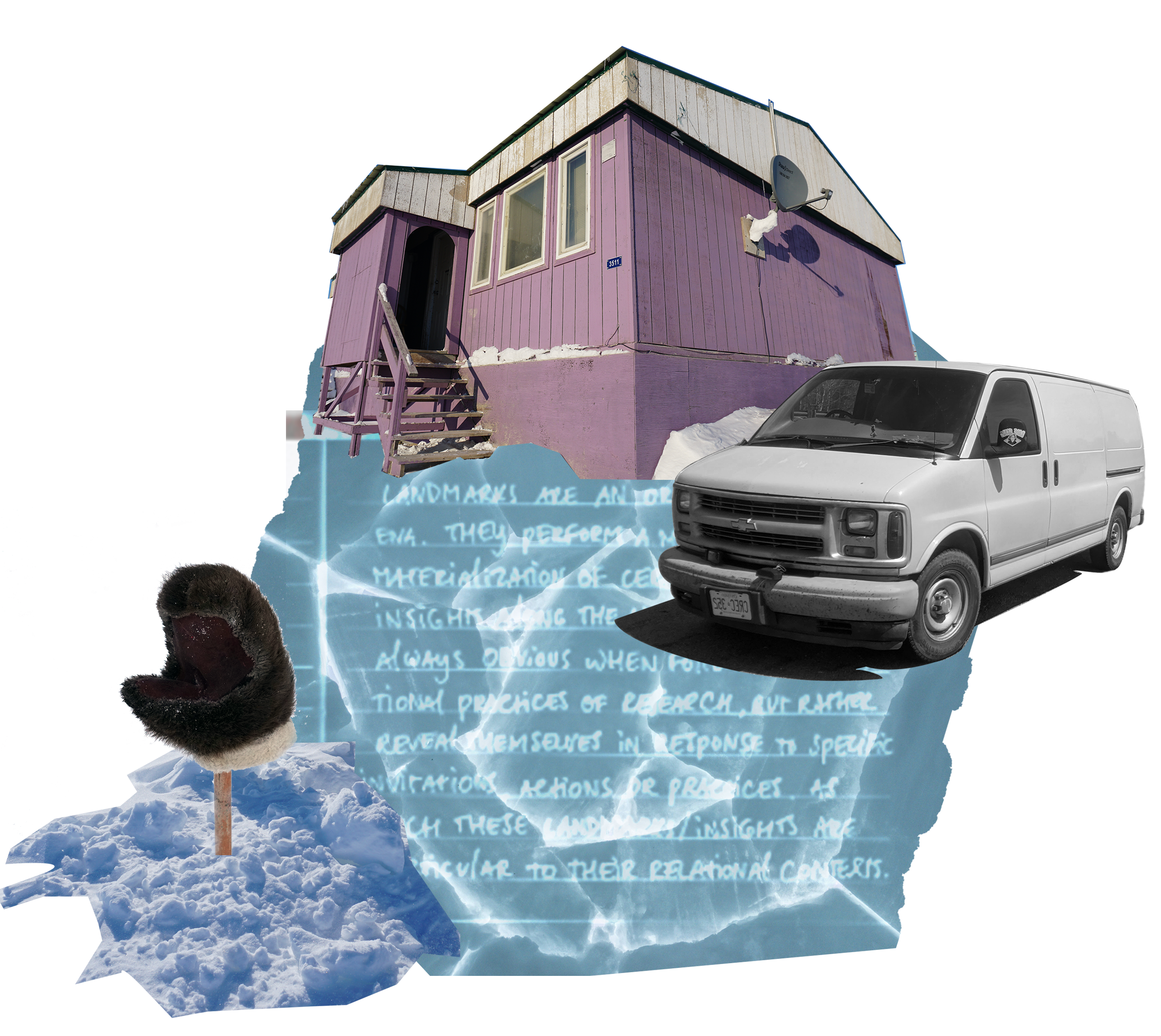The Great White Beast: Difference between revisions
No edit summary |
No edit summary |
||
| Line 1: | Line 1: | ||
[[File:Landmark.png|thumb]] | [[File:Landmark.png|thumb]] | ||
The Great White Beast is a figure that conjures many associative frames. Firstly, and foremost reference to polar bears, or more accurately a moniker that is employed within Inuit custom, to respectfully avoid talking about polar bears’ (Jimmy Qirqut, Gjoa Haven Elder, 2022), it also gestures towards the great white beast of colonialism, while simultaneously evoking a frame of powers and agencies that extend beyond our own comprehension or capacities: a “beast of a problem”. | |||
<span class="return link" data-page-title="Point of Beginning Mx. Science" data-section-id="5" data-encounter-type="return">[[Point of Beginning Mx. Science#The Liminal as Ethical Space|Return to Cut 2 "Mx. Science"]]</span></span> | <span class="return link" data-page-title="Point of Beginning Mx. Science" data-section-id="5" data-encounter-type="return">[[Point of Beginning Mx. Science#The Liminal as Ethical Space|Return to Cut 2 "Mx. Science"]]</span></span> | ||
Revision as of 10:53, 9 February 2025

The Great White Beast is a figure that conjures many associative frames. Firstly, and foremost reference to polar bears, or more accurately a moniker that is employed within Inuit custom, to respectfully avoid talking about polar bears’ (Jimmy Qirqut, Gjoa Haven Elder, 2022), it also gestures towards the great white beast of colonialism, while simultaneously evoking a frame of powers and agencies that extend beyond our own comprehension or capacities: a “beast of a problem”.
